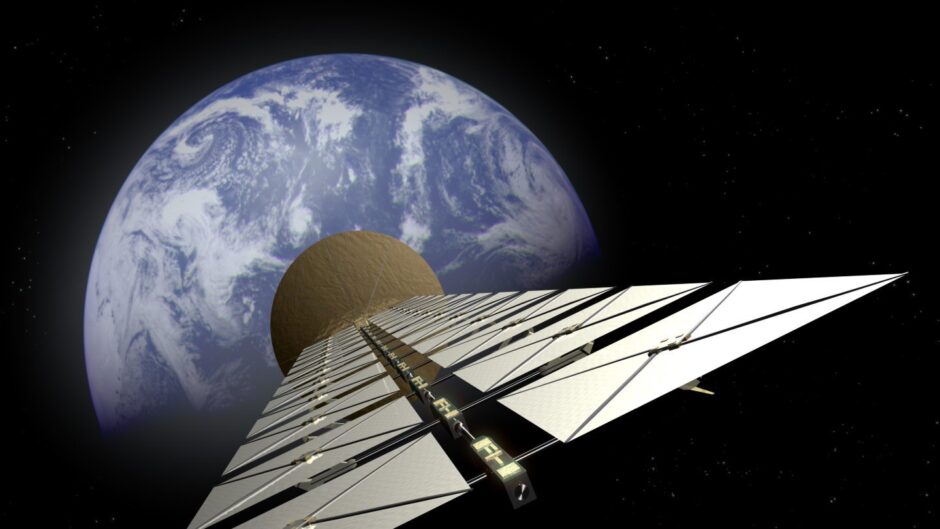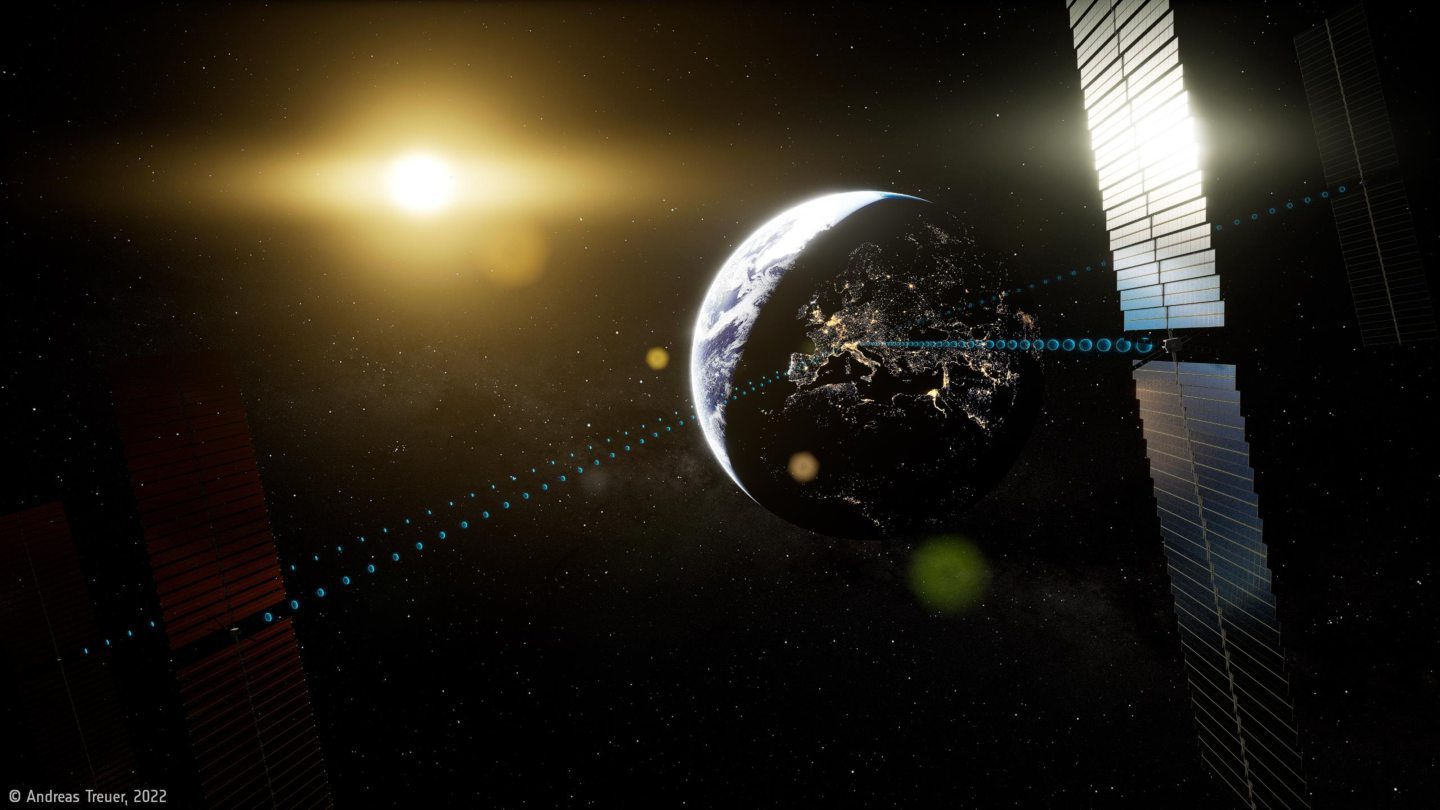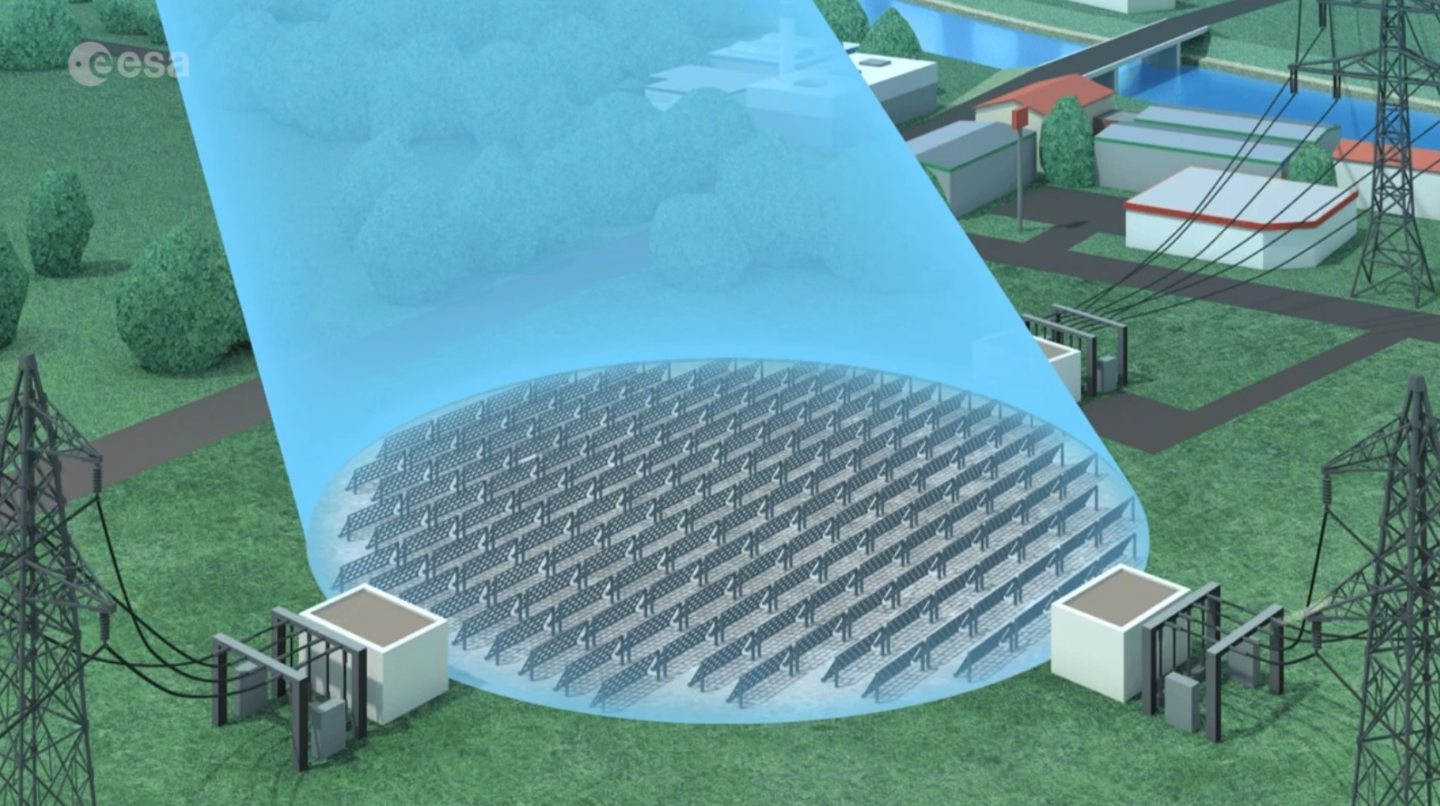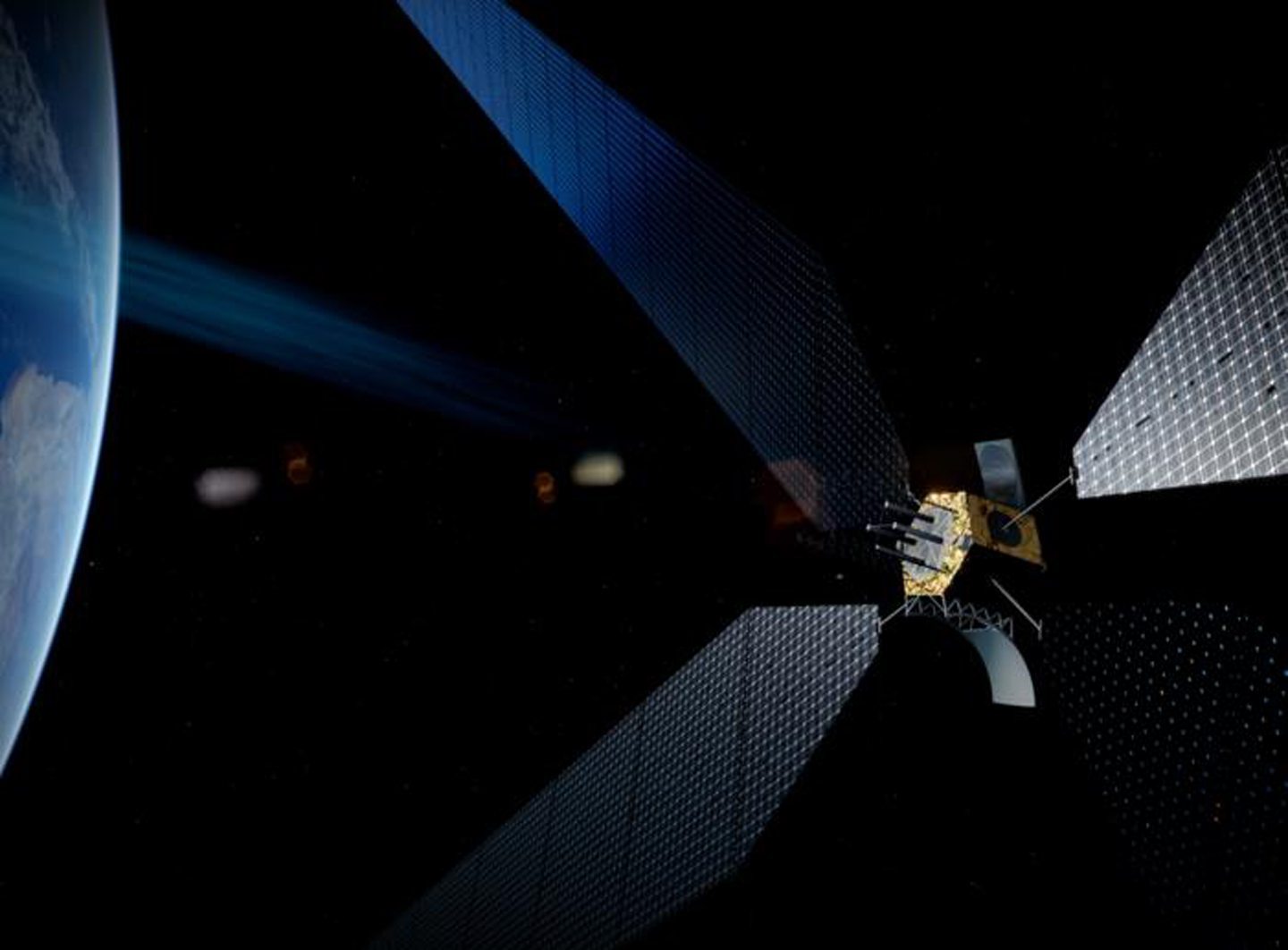
UK firms are looking to the stars to meet the net zero energy needs of the future, with the prospect of space-based solar power (SBSP) technology gaining attention.
The concept involves using satellites to harvest solar energy in space which is then converted into high frequency radio waves to be beamed back to a receiver on Earth.
A 2021 study found space-based solar generate up to 10GW of electricity a year by 2050, a quarter of the UK’s current electricity demand.
Oxfordshire-based Space Solar is among several UK firms working on the technology, and last year the UK government distributed £4.3 million in funding to eight projects focused on innovation in the emerging sector.
Meanwhile, the European Space Agency (ESA) launched its SOLARIS initiative, assessing the viability of developing a space-based solar programme ahead of a final decision in 2025.
Space agencies and private firms in China, the US, Russia, Australia and Japan are also assessing the feasibility of developing space-based solar power programmes, and the technology is already beginning to take flight.
Earlier this year, researchers at the California Institute of Technology celebrated the successful completion of the first in-space mission demonstrating the ability to beam power back to Earth from space, calling it a “major milestone“.
Back to the future
While the idea may seem futuristic, the concept predates space travel itself.
In 1923, Russian theorist Konstantin Tsiolkovsky proposed deploying a system of mirrors to beam sunlight down to Earth to assist with cooking, while science fiction writer Isaac Asimov chose a solar power satellite as the setting for his 1941 short story ‘Reason’.
Engineers first got involved in the concept in 1968, when Czech-born NASA engineer Peter Glaser produced a design for a solar power satellite.
Glaser later secured a patent in 1971 for his microwave-based method of transmitting power to a receiving ‘rectenna’ on the ground.
NASA and the US Department of Energy undertook extensive research into the concept throughout the 1970s, while the ESA completed its first study in 1979.
The idea remained on the agenda of the space sector throughout the 80s and 90s, but the astronomical cost of launching satellites meant space-based solar power remained uneconomic to pursue at scale.
But with the advent of a burgeoning private space sector and significant reductions in the cost per kilogram of space travel, coupled with global net zero ambitions, space-based solar power is starting to receive serious attention.
Greater solar efficiency in space
Space-based solar power could provide several potential advantages over other forms of low-carbon and renewable energy.
In a recent interview, Satellite Applications Catapult chief technology officer Paul Febvre said SBSP makes it possible to “rapidly and dynamically” deliver power to a city anywhere within view of the orbiting power station in response to a local surge, regardless of the time of day or weather conditions.
“This can potentially circumvent the requirement for a resilient ‘national grid’, and can be used to supplement terrestrial solar-power infrastructure with a reliable additional source of energy,” he said.
In addition, solar panels operate more efficiently in space than they do on Earth according to Space Solar co-chief executive officer Sam Adlen.
“The compelling economics is driven by the fact the solar panels in space receive about 13 times more incident energy in space than they do on the ground for a country like the UK,” he said.
As a result, Mr Adlen said SBSP offers “highly desirable characteristics and favourable economics”, with the potential to meet 20% of the world’s electricity demands in the coming decades.
Meanwhile at an estimated £26/MWh, Mr Adlen said the levelised cost of electricity of SPSB is around one third that of large scale nuclear and on par with intermittent wind and terrestrial solar.
An ESA report states SBSP “should not be considered as a competitor” to terrestrial solar and wind energy, but rather a “complementary addition” of baseload and dispatchable power.
Astronomical challenges
But deploying the technology at scale will be a monumental challenge, with a typical design for a SBSP concept extending more than a kilometre across.
Meanwhile, building the corresponding receiver station on the ground would require footprint ten times that size.
ESA exploration scientist Dr Nicol Caplin said a functioning SBSP station would be “the biggest thing humanity has ever put in space”, requiring “groundbreaking engineering” for a modularly designed orbiting solar farm.
“To do this in an economically sensible way, it requires mass production of identical components, launched on affordable rockets and pieced together in space robotically in a process known as in-orbit assembly,” Dr Caplin said.
“The same principle will apply for any maintenance needed where human crews are unlikely to be called in to tighten any bolts.
“Astronauts have an important place in space, but for what we are doing and how long maintenance could take, it is robots that don’t have to worry about running out of air.”
Mr Febvre said to provide “meaningful power” of around 2GW to a “relatively small” 30 square mile rectenna would require a station weighing between 2000 and 5000 metric tonnes.
“Even taking into account the heavy lift capability of Space-X Starship is likely to take over 100 launches to geostationary orbit,” he said.
Other challenges identified by the ESA include reducing orbital launch costs, decommissioning, embodied carbon and overall sustainability, achieving efficient power transmission and winning public support for large-scale rectenna locations.
Does the world need space-based solar?
Apart from the technical challenges, many critics say the concept simply isn’t necessary.
Stanford University physicist and energy policy expert Amory Lovins told CNN the world should keep its focus on terrestrial renewables and baseload power solutions like pumped-hydro and battery storage.
“Why spend money on something that has no chance of a business case if you succeeded, whose need will have been met before you could build it and whose most optimistic future cost estimates are the same as the current price of terrestrial solar power plus batteries?” he said.
A report released this year by NASA also offered a more pessimistic take on SBSP, concluding it it would be “more expensive than terrestrial sustainable alternatives”, although these costs could fall if capability gaps are addressed.
Potential for GW scale system by 2040
But despite the galactic-scale challenges, many in the space sector remain confident the technology can get off the ground.
Dr Caplin said following the completion of the SOLARIS programme in 2025, early demonstrators could launch by 2030 before scaling up to a pilot plant by 2035 and a GW scale system by 2040.
Mr Febvre said currently the biggest barriers to SBSP are not technological, but “socio-political and regulatory”.
“The first steps towards driving investment into the future systems will need to be a clear commitment to addressing the regulatory barriers that stand in the way of such viable alternative energy sources to allow us to achieve net-zero by 2050,” he said.
Even if the space sector can’t achieve liftoff for its solar energy dreams, investing in technological advancement could progress other concepts like space-based mirror reflectors and solar geoengineering.
For the ESA at least, 2025 will see the planned end of its SOLARIS initiative and a possible decision on whether to give space-based solar its moment in the sun.
 © Supplied by ESA/A. Treuer
© Supplied by ESA/A. Treuer © ESA
© ESA © Supplied by ESA
© Supplied by ESA © Supplied by Drax
© Supplied by Drax